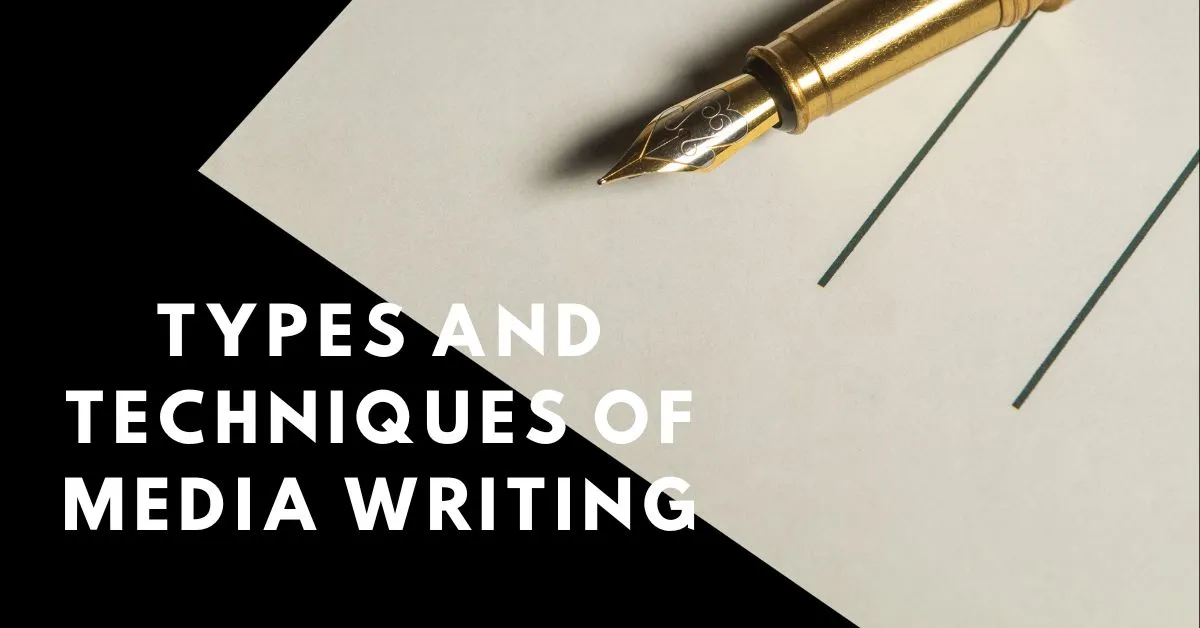Media writing is the art of conveying information, stories, and ideas through various forms of
media. From newspapers and magazines to online platforms and social media, the world of media
writing is diverse and ever-evolving. In this blog, we'll delve into different types of media
writing, each with its unique style, purpose, and techniques.
1. News Writing
Description: News writing is the foundation of journalism, delivering factual
and timely information to the public. It aims to answer the questions: who, what, when, where,
why, and how.
Techniques:
- The inverted pyramid structure: Most important information at the
beginning, followed by less crucial details.
- Objective tone: Present facts without bias or personal opinion.
- Active voice: Use active verbs to make the writing more engaging.
- Attribution: Properly attribute information to sources.
2. Feature Writing
Description: Feature writing goes beyond the facts to provide in-depth insights, analysis, and
human interest stories. It adds depth and context to news stories.
Techniques:
- Engaging lead: Start with an attention-grabbing hook.
- Narrative storytelling: Use storytelling techniques to draw readers in.
- Descriptive language: Paint a vivid picture for the reader.
- Strong quotes: Incorporate interviews and quotes to add authenticity.
3. Opinion Writing
Description: Opinion writing expresses personal viewpoints, analysis, and
commentary on various subjects. It allows writers to share their perspectives on current events,
trends, and societal issues.
Techniques:
- Clear stance: Present a well-defined opinion on the topic.
- Strong arguments: Support opinions with relevant facts, data, and logical
reasoning.
- Counterarguments: Address opposing viewpoints to strengthen your argument.
- Engaging language: Use rhetoric and persuasive techniques.
4. Editorial Writing
Description: Editorials are the official stance of a publication on a particular issue.
They reflect the collective opinion of the publication's editorial board.
Techniques:
- Thesis statement: Clearly state the publication's stance on the issue.
- Evidence-based: Support the stance with facts, research, and expert
opinions.
- Call to action: Propose solutions or actions related to the issue.
- Balanced tone: Maintain professionalism and avoid extreme language.
5. Press Releases
Description: Press releases are official statements issued by organizations to announce
news, events, or updates to the media. They aim to generate media coverage.
Techniques:
- Concise and informative: Provide key details in the opening paragraph.
- Objective language: Present information without overt marketing language.
- Contact information: Include contact details for further inquiries.
- Relevant quotes: Incorporate quotes from key individuals involved.
6. Copywriting
Description: Copywriting focuses on persuasive writing to promote products, services, or
brands. It's commonly used in advertising and marketing materials.
Techniques:
- Benefit-driven: Highlight how the product or service solves a problem for
the consumer.
- Call to action: Encourage the reader to take a specific action (e.g., "Buy
now").
- Audience targeting: Tailor the writing style to the target audience's
preferences.
- Creative language: Use catchy slogans, wordplay, and emotional triggers.
Conclusion
Media writing encompasses a wide range of forms, each with its specific purpose and techniques.
Whether you're reporting news, sharing opinions, crafting compelling narratives, or persuading
through advertising, mastering the art of media writing involves understanding the nuances of
each type and adapting your skills accordingly. As media continues to evolve, so too does the
dynamic world of media writing.


